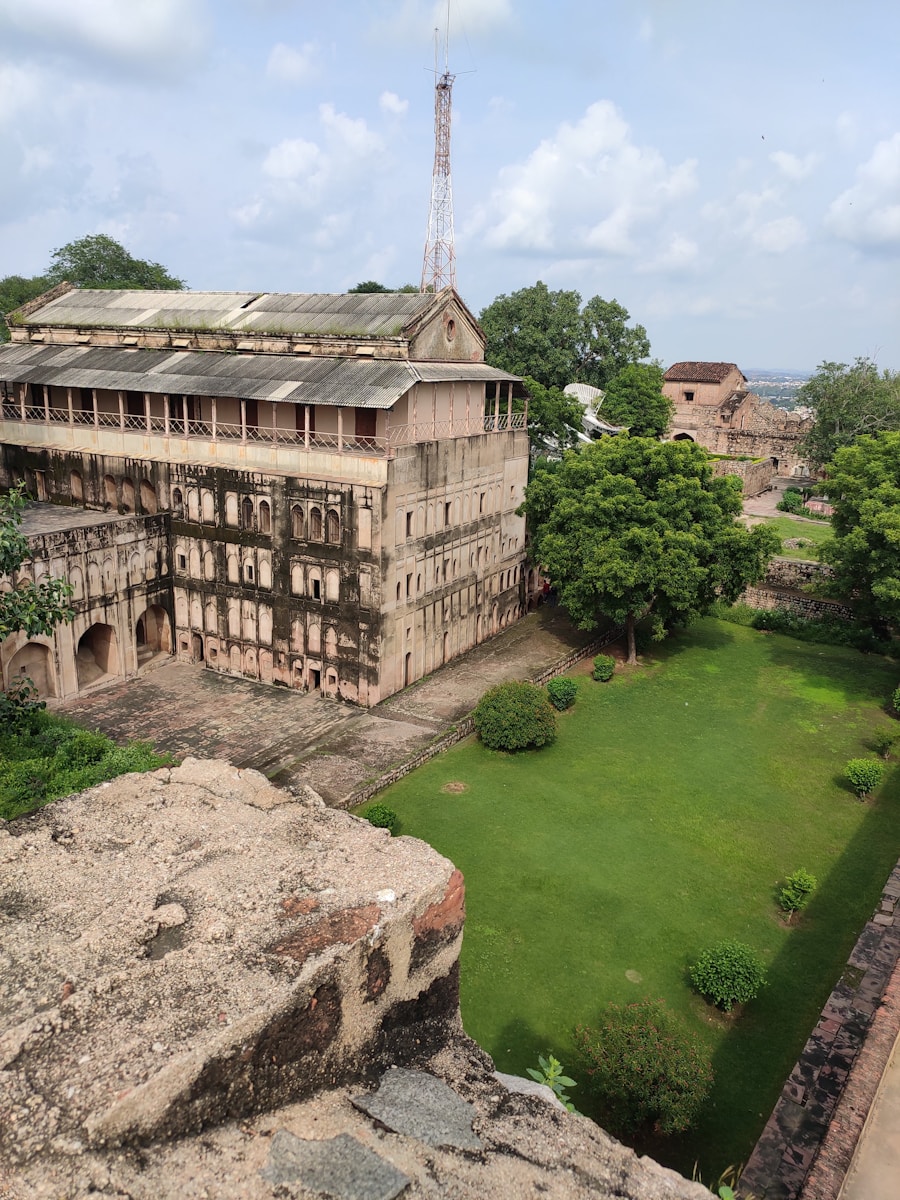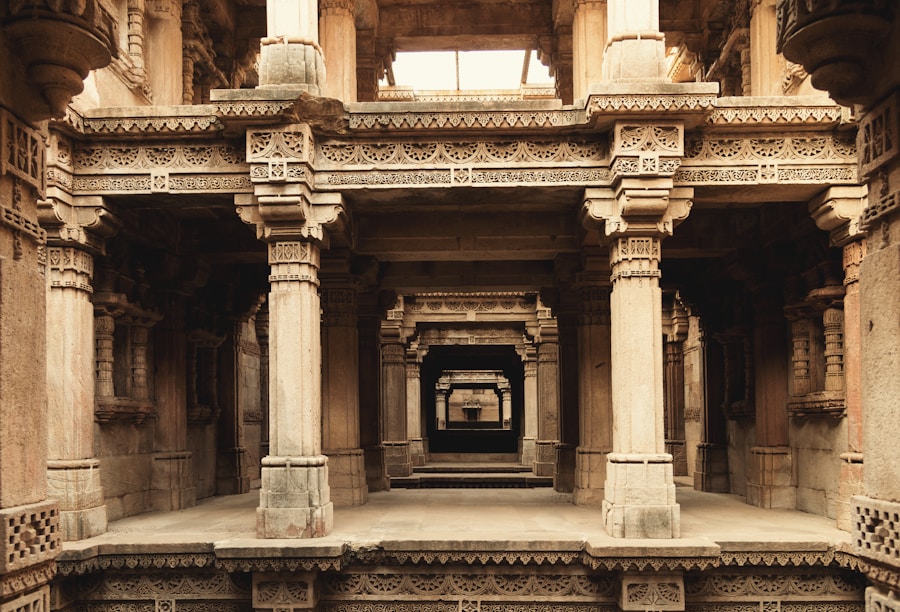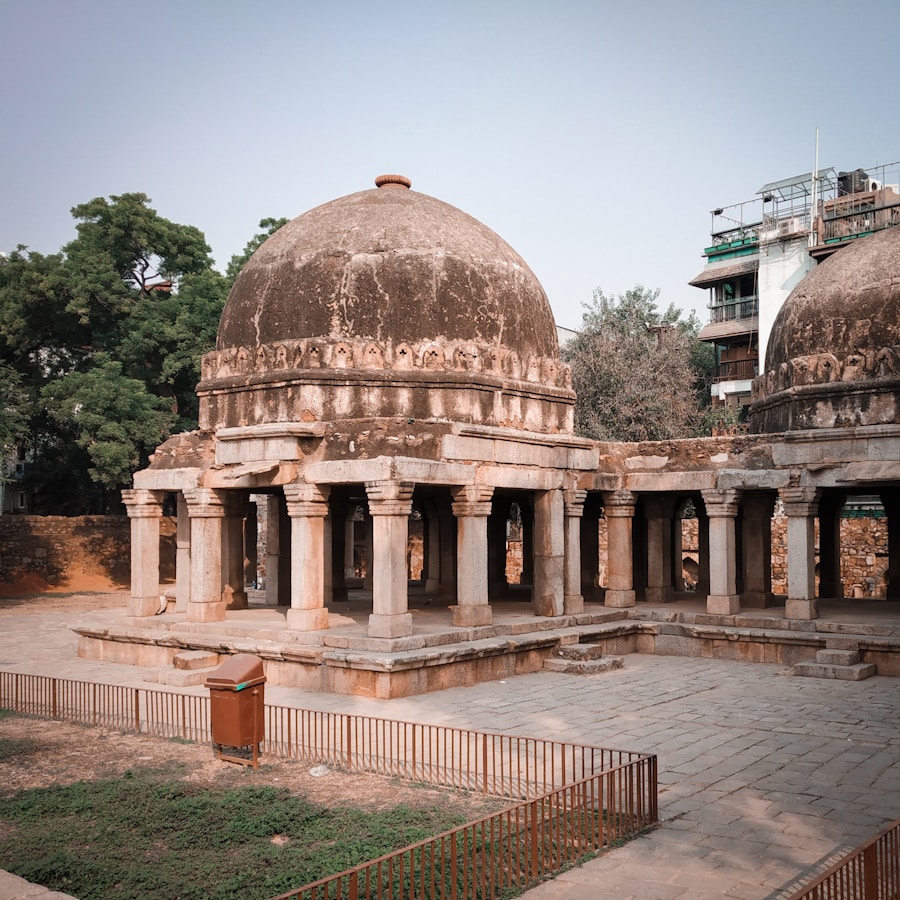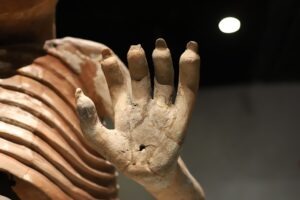Ancient Indian urbanization represents a significant chapter in the history of human civilization, characterized by the emergence of complex societies, sophisticated governance, and remarkable architectural achievements. The roots of urbanization in India can be traced back to the Indus Valley Civilization, which flourished around 2500 BCE. Cities like Harappa and Mohenjo-Daro exemplified advanced urban planning, featuring grid layouts, drainage systems, and public baths.
These early urban centers were not merely settlements; they were vibrant hubs of trade, culture, and innovation that laid the groundwork for subsequent urban development across the subcontinent. The process of urbanization in ancient India was not a singular event but rather a gradual evolution influenced by various factors, including geography, climate, and socio-political dynamics. The fertile plains of the Ganges and the Deccan plateau provided ample resources for agriculture, which in turn supported larger populations.
As communities grew, so did the complexity of their social structures, leading to the establishment of cities that served as administrative and religious centers. This intricate tapestry of urban life was marked by a rich interplay of diverse cultures, languages, and traditions, making ancient Indian cities a melting pot of ideas and innovations.
Key Takeaways
- Ancient Indian urbanization dates back to the Indus Valley Civilization, with well-planned cities like Mohenjo-Daro and Harappa showcasing advanced urban planning and infrastructure.
- The architectural marvels of ancient Indian cities include intricate drainage systems, well-organized streets, and multi-story houses, reflecting a high level of engineering and architectural expertise.
- The influence of ancient Indian urbanization on modern architecture can be seen in the use of courtyard spaces, passive cooling techniques, and sustainable building practices that are still relevant today.
- The cultural significance of ancient Indian urbanization is evident in the religious and spiritual symbolism integrated into city planning, as well as the emphasis on community living and public spaces.
- The legacy of ancient Indian urbanization in contemporary society is reflected in the continued use of traditional building materials, design elements, and urban planning principles in modern Indian cities.
- Preservation and conservation of ancient Indian urbanization sites is crucial for maintaining cultural heritage and historical significance, requiring efforts to protect and restore these ancient cities for future generations to appreciate.
Architectural Marvels of Ancient Indian Cities
The architectural achievements of ancient Indian cities are a testament to the ingenuity and creativity of their builders. One of the most notable examples is the city of Mohenjo-Daro, where the Great Bath stands as an iconic structure. This large public bathing area, constructed with baked bricks and sophisticated drainage systems, reflects the importance of ritual cleanliness in the Indus Valley Civilization.
The meticulous planning evident in Mohenjo-Daro’s layout, with its well-defined streets and residential blocks, showcases an understanding of urban design that was ahead of its time. Another remarkable example is the city of Pataliputra, which served as the capital of several ancient Indian empires, including the Maurya and Gupta dynasties. Pataliputra was characterized by its impressive fortifications, palaces, and public spaces.
The city was strategically located at the confluence of major rivers, facilitating trade and communication. The architectural style of Pataliputra influenced subsequent urban centers across India, with its emphasis on grandeur and functionality. The use of wooden pillars and elaborate carvings in structures like the Ashokan Pillars exemplifies the artistic prowess of ancient Indian craftsmen.
Influence of Ancient Indian Urbanization on Modern Architecture

The legacy of ancient Indian urbanization continues to resonate in contemporary architecture, where elements from historical designs are often reinterpreted to suit modern sensibilities. The principles of urban planning established in ancient cities can be seen in the layout of modern Indian cities, where considerations for public spaces, transportation networks, and community engagement remain paramount. For instance, the concept of integrating nature into urban environments can be traced back to ancient practices where gardens and water bodies were integral to city design.
Moreover, architectural styles from ancient India have found their way into modern constructions through the revival of traditional motifs and techniques. The use of intricate jali work (lattice screens) and chhatris (elevated dome-shaped pavilions) in contemporary buildings reflects a desire to connect with India’s rich architectural heritage. Notable examples include the incorporation of these elements in public buildings and cultural centers that aim to celebrate India’s historical narrative while addressing current needs.
This blending of old and new not only preserves cultural identity but also enriches the aesthetic landscape of modern urban environments.
Cultural Significance of Ancient Indian Urbanization
The cultural significance of ancient Indian urbanization extends beyond mere physical structures; it encompasses a rich tapestry of social practices, religious beliefs, and artistic expressions that defined life in these cities. Urban centers served as melting pots where diverse communities interacted, leading to a vibrant exchange of ideas and traditions. Festivals, markets, and public gatherings were integral to urban life, fostering a sense of community and shared identity among residents.
Religious practices played a pivotal role in shaping the cultural landscape of ancient Indian cities.
The architectural grandeur of these temples, adorned with intricate sculptures and carvings, reflected the spiritual aspirations of the populace.
Cities like Varanasi and Kanchipuram became renowned for their religious significance, attracting pilgrims from far and wide. This intertwining of urban life with spiritual practices underscores the profound impact that religion had on shaping societal norms and values in ancient India.
Legacy of Ancient Indian Urbanization in Contemporary Society
The legacy of ancient Indian urbanization is palpable in contemporary society, influencing various aspects ranging from governance to cultural practices. The administrative frameworks established in ancient cities laid the groundwork for modern governance structures in India. Concepts such as local self-governance can be traced back to ancient practices where city councils played a crucial role in decision-making processes.
This historical continuity highlights how ancient urban centers contributed to the evolution of democratic principles that are now integral to modern Indian society. Culturally, many festivals and traditions celebrated today have their roots in ancient urban practices. The vibrant markets that once thrived in cities like Taxila continue to inspire contemporary bazaars where artisans showcase their crafts.
The emphasis on community engagement during festivals reflects a continuity of social values that have persisted through centuries. Additionally, culinary traditions originating from ancient urban centers have evolved into diverse regional cuisines that celebrate local ingredients and cooking techniques. This rich cultural heritage serves as a reminder of the enduring influence that ancient urbanization has on contemporary life.
Preservation and Conservation of Ancient Indian Urbanization Sites

Threats to Ancient Sites
Numerous archaeological sites across India are recognized for their historical significance, yet many face threats from urban development, environmental degradation, and neglect.
Conservation Efforts
Efforts to protect these sites involve collaboration between government agencies, non-profit organizations, and local communities to ensure that they are maintained as living monuments to India’s past. One notable initiative is the Archaeological Survey of India (ASI), which plays a pivotal role in excavating, preserving, and promoting ancient sites. The ASI has implemented various conservation projects aimed at restoring structures while maintaining their historical integrity.
Promoting Cultural Heritage
Additionally, community involvement in conservation efforts has proven effective in raising awareness about the importance of preserving cultural heritage. In conclusion, the preservation of ancient urbanization sites is not merely an act of maintaining physical structures; it is an endeavor to keep alive the stories and legacies that shaped India’s civilization. By fostering a sense of pride in this heritage among younger generations, society can ensure that the lessons learned from ancient urbanization continue to inform contemporary practices in architecture, governance, and cultural expression.
For more insights into ancient Indian culture and traditions, you may be interested in exploring the article on Buddhist Teachings: Eightfold Path, Brahma Viharas, and Paramitas. This article delves into the spiritual teachings of Buddhism and how they have influenced the cultural landscape of India. Understanding these teachings can provide a deeper appreciation for the architectural marvels and urbanization of ancient India discussed in the article on Legacy of Ancient Indian Urbanization: Architecture and Culture.
FAQs
What is the legacy of ancient Indian urbanization?
The legacy of ancient Indian urbanization includes the architectural and cultural developments that emerged from the urban centers of the time, such as the well-planned cities, sophisticated drainage systems, and the development of art, literature, and philosophy.
What are some examples of ancient Indian urban architecture?
Examples of ancient Indian urban architecture include the well-planned cities of the Indus Valley Civilization, such as Mohenjo-Daro and Harappa, which featured grid-like street layouts, advanced drainage systems, and multi-story houses.
How did ancient Indian urbanization contribute to culture?
Ancient Indian urbanization contributed to culture through the development of art, literature, and philosophy. The urban centers served as hubs for cultural exchange and the flourishing of artistic and intellectual pursuits.
What impact did ancient Indian urbanization have on modern urban planning?
The well-planned cities of ancient India, with their advanced drainage systems and grid-like layouts, have influenced modern urban planning and continue to be studied for their innovative approaches to city design and infrastructure.
What are some key features of ancient Indian urbanization?
Key features of ancient Indian urbanization include well-planned cities with grid-like street layouts, advanced drainage systems, multi-story houses, and the development of art, literature, and philosophy within urban centers.






















+ There are no comments
Add yours